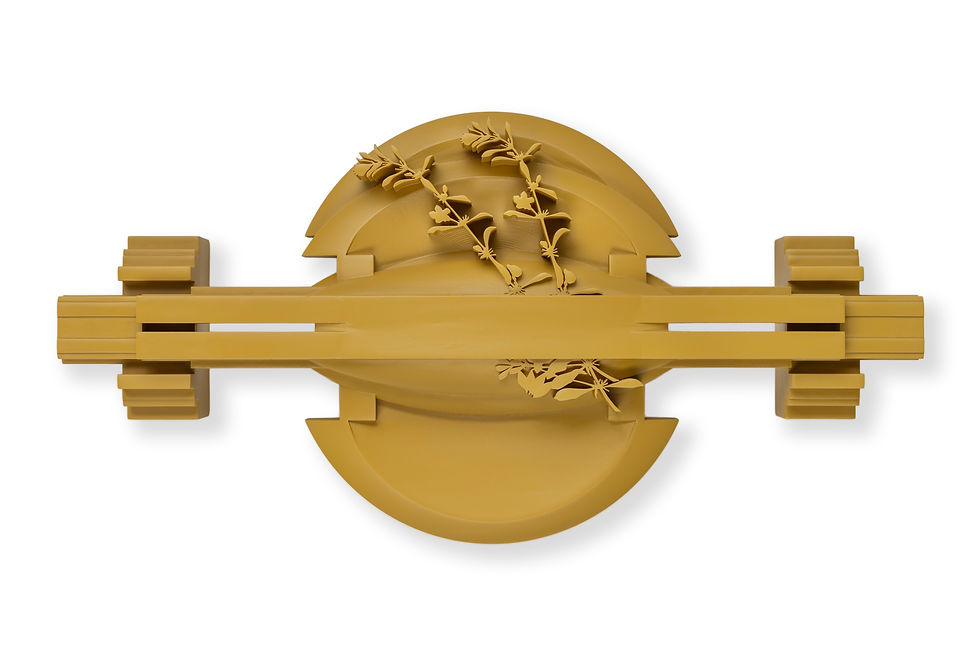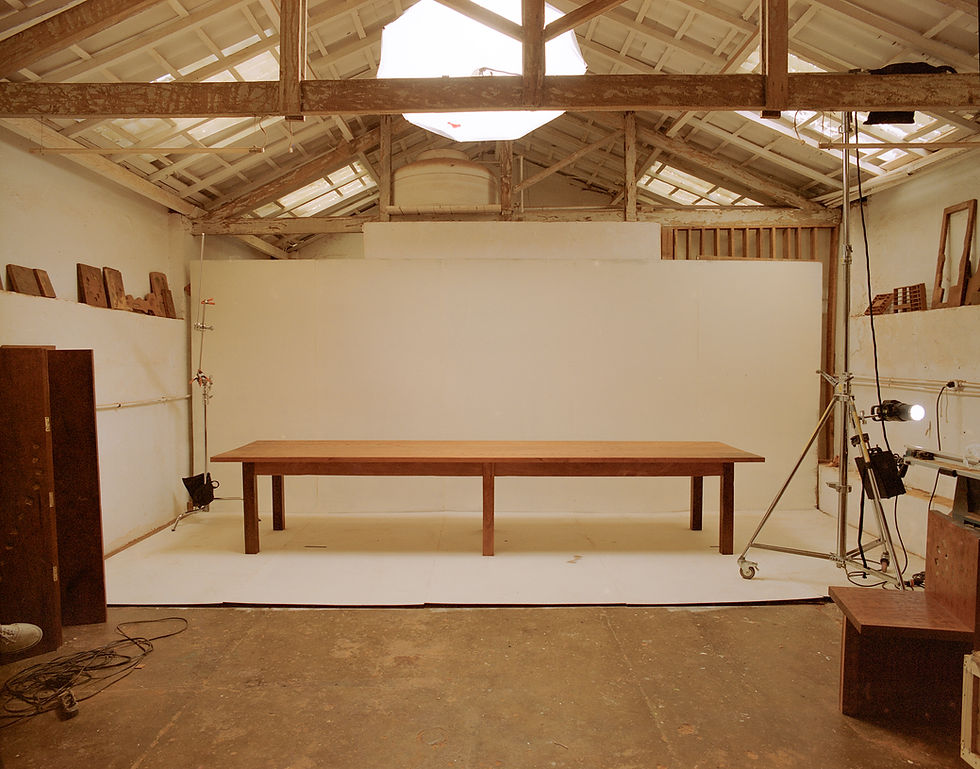This Art Installation is Inspired From the Traditional Theatre Form of Maharashtra's Konkan Area
- The Design Collective

- Mar 27, 2020
- 4 min read
'Dashavatara' by Rajaram Naik
Artist Rajaram Naik depicts his fascination for ‘Dashavtara Natak’, a traditional practice prevalent to the Konkan Belt of Maharashtra.
Last year, Goa hosted the Serendipity Arts Festival which showcased works by the awardees of Goan Artists’ Grant has in the exhibition ‘Form, Metaphor, Memory’. One of the awardees, Rajaram Naik depicted his fascination for ‘Dashavtara Natak’, a traditional practice prevalent to the Konkan Belt of Maharashtra. 'Dashavatara' translates the 10 reincarnations of Vishnu Deity and 'Nataka' is a branch of dramaturgy/drama.
"This traditional practice is executed in village temple premises, composed arranging together the elements of dance, drama, music, storytelling and narration, presented through colorful portrayal of varied characters. I have grown up experiencing this tradition closely. Being a part of this practice as a spectator over the years has made me curious and fond of this unique process where the actor dedicates his life to the character he is assigned in the Dashavtara", Rajaram explains.
This practice revolves around the depiction of 10 reincarnations of lord Vishnu and are performed overnight, till the dawn, coloring the night with the 'Puranik' episodes and characters created on stage. More than art this tradition is practiced as a way of life. This unique practice, always makes Rajaram wonder the dedication and the process of characterization that the actor goes through for such a transformation physically as well as psychologically. Lord Vishnu is associated with the creation and protection of the universe (Srushti) represented through his 10 facets which include: Matsya, Kurma, Varaha, Narsimha, Vamana, Parshurama, Rama, Krishna/Balarama, Baudh and Kalki.

Dashavtara practice was on the verge of extinction a few years ago which was again revived with adding to it the contemporary elements of change making it survive through the contemporary time. It is enacted only by the male artists, cross dressing to play the female characters. Wearing the skin of masks of the characters they create. The artists walk along with this practice as a part of life, following a certain way of living with no definite boundaries between the real and the “story world" they create on stage, playing different roles on and off stage.
"Their way of life and dedication to their art practice is what fascinates me. I would further like to explore this area and practice through my work, documenting the merging frontier in the life of Dashavatara artist's life documenting and conducting case study of one of the main artists of the Dashavatara who brings to life a female character on stage. Where he individually plays different roles in his living and stories he enacts as a whole. my work practice revolves around documentation of a character in the form of photographs, Video clips, Audio recordings and Archives . My practice aims at extending the finite stage to the infinite life, recording the process of transformation in the life of the actor for the performance, unfolding my personal curiosity. Sharing the unheard stories through the medium of documentation and research as a part of the series with further exploration", says Rajaram.

This work is basically portrayal of the dramatist’s (Dashavatara artist) life through the sound and visual mediums, to which the artist will arrive, with the research and insights into his life and lifestyle, through his history and story, through understanding his persona and binding together the different characters he plays throughout his day. Rajaram's working process involves vigorous research with site visits, interviews, photo documentation and audio-visual recording. This work will exclusively explore life of a Dashavatara artist named Bunty Kambli, whom he has been watching perform since long ago in his village, he has been observing his life closely, knowing more about his struggles and passion for the art. He also interviewed him to build up references and research for his work.
This form of art is practiced not as an inherited tradition but as a pure choice of the artist. These artists dedicate their life to the art, especially when they need to play the female character, they do not use wig but they grow their hair to fit into the skin of the female character they enact. It’s a process of total transformation and dedication, committing to the role. This is a part of their life that they carry with them even when they play other roles as that of a son, of a husband, of a father and of a professional.

"With the conversations and interviews I have had with Bunty have never failed to surprise me and to fascinate me, attracting me to further explore this area of performance, the performers and their life and psychology. I would address this work as a beginning point of the series of work that will follow exploring the living traditions and sustaining the traditions that are dying a slow death due to lack of appreciation and support, bringing it to the limelight and spreading awareness about the forgotten traditions through documentation, a mere attempt at freezing them in material , textual and visual mediums forever", Rajaram added.
Artist: Rajaram Naik
Instagram: https://www.instagram.com/rajaramnaik93/




















Comments